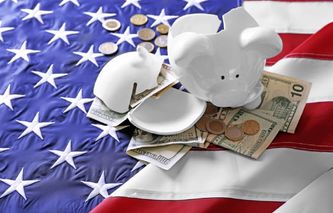Well-known for their outrageous interests and lack of regulation, payday loans remain a controversial topic in the financial industry. As disputed as they are, however, they continue to be a thriving multi-billion industry that millions rely on when short on cash. These payday loan statistics reveal the latest state of the industry worldwide and in the US as its largest market. Read on to discover data on payday borrowers’ habits, their demographic profiles, and more.
10 Key Payday Loan Statistics to Know in 2025
The global payday loan market is expected to reach $42.6 billion by the end of 2028.
12 million Americans take out payday loans each year.
Over two-thirds of payday loan borrowers use the loan to cover recurring expenses.
64% of borrowers renew their payday loans during an 11-month period.
58% of payday loan borrowers struggle to pay their bills at least half the time.
72% of borrowers take out payday loans exclusively from storefront providers.
24% of borrowers say that the terms and conditions of online payday loan providers are very or somewhat confusing.
52% of payday loan borrowers are women.
Texas is the US state with the highest payday loan interest rate.
37% of borrowers would have taken a payday loan on any terms offered.
General Statistics on Payday Loans
The global payday loan market reached $33.5 billion in 2021.
Estimated to grow at a compound annual growth rate (CAGR) of 4.1% between 2022 and 2028, this figure is expected to reach $42.6 billion by the end of 2028. While North America was the largest region of the payday loans market in 2021, it’s estimated that the Asia Pacific will emerge as the fastest-growing region between 2022 and 2028.
(Vantage Market Research)
12 million Americans take out payday loans each year.
While 63% of all payday loans are accounted for by borrowers who take out twelve of them in a year, the average borrower takes out eight payday loans annually. Data on payday loans usage reveals that these loans average $375 each, and borrowers spend about $520 on interest for them.
(The Pew Charitable Trusts)
69% of first-time payday loan borrowers use the loan to cover recurring expenses.
Among them, 53% use the money to pay for regular expenses (such as utilities, car payments, credit card debt, etc.), 10% for their rent or mortgage, and 5% for food.
16% of first-time payday loan borrowers use their loans to cover an emergency or unexpected expense, 8% do so to pay for something special, and 5% for other reasons.
(The Pew Charitable Trusts)
48% of borrowers have a single payday loan sequence during an 11-month period.
Payday loan facts reveal that the percentages of borrowers who take out payday loans in more than one sequence is in reverse proportion to the number of sequences. Namely, 26% borrow in two sequences, 15% do so in three, 7% borrow in four sequences, while only 4% take out payday loans in five sequences or more. These figures indicate that a relatively small portion of payday loan borrowers have multiple periods where they don’t have a payday loan within an 11-month period.
(CFPB)
64% of borrowers renew their payday loans during an 11-month period.
Of the remainder, 20% default, while the statistics of people that manage to pay off a payday loan stand at 15%.
Among repayers, 61% take out a single payday loan within the same period.
Although at a much smaller scale, most renewers (36%) also take out payday loans in a single sequence. 30% do so in two sequences, 19% in three, while 15% take out payday loans in four or more sequences during an 11-month period. Among them, some even manage to renew over 24 loans in the same period.
27% of borrowers default on their first payday loan, while a substantial portion manages to renew them up to ten times within an 11-month period.
(CFPB)
58% of payday loan borrowers struggle to pay their bills at least half the time.
Of those, payday loan user statistics reveal that 23% have trouble paying their bills monthly, 21% about half the time, and 14% most months. On the other end of the spectrum, 28% struggle to pay their bills less than half the time, while only 14% never have trouble paying their bills.
(The Pew Charitable Trusts)
55% of payday loans are paid bi-weekly.
Those paid monthly follow at 33%, while only 12% are paid weekly.
(CFPB)
The majority (37%) of payday loan borrowers can afford to pay less than $100 a month toward a payday loan.
The above refers to the amount that borrowers can afford to repay a loan while still being able to cover their other bills and basic expenses. According to payday loans facts, another 12% can afford $100 per month, 28% can afford to pay $101–$400, 14% can afford more than $401 a month, and 9% don't know how much they can afford to pay toward a payday loan per month.
(The Pew Charitable Trusts)
71% of borrowers say they’ve repaid their payday loan after saving enough money.
19% say they asked their friends/family for help, while 17% used their tax refund. As stated by 12% of borrowers each, pawning or selling items and taking out another short-term loan are the fourth-most-common choice. According to banks and payday loans facts, the least-common options include using a credit card (4%) and taking out a loan from a bank or credit union (3%).
(The Pew Charitable Trusts)
If payday loans were unavailable, 81% of borrowers would cut back on their expenses.
62% would delay paying some bills, while an equal portion of 57% each would borrow from family or friends or pawn or sell personal possessions. 44% would get a loan from a bank or a credit union, 37% would use a credit card, and 17% would borrow from an employer.
(The Pew Charitable Trusts)
Storefront vs Online Payday Loan Statistics
72% of borrowers take out payday loans exclusively from storefront providers.
As per the latest available data, 16% do so exclusively through online providers, while 4% use both and 7% refer to other kinds of providers.
(The Pew Charitable Trusts)
24% of borrowers say that the terms and conditions of online payday loan providers are very or somewhat confusing.
This compares to the 12% who say the same about storefront payday loan lenders and 14% who are very or somewhat confused by the terms and conditions tied to payday loans in general.
(The Pew Charitable Trusts)
46% of payday loan borrowers have had their checking account overdraft after an online payday loan provider has made a withdrawal.
According to payday loans statistics, the corresponding figure for those using storefront lenders stands is twice lower at 23%. It also compares to 27% of all payday loan borrowers who say that a payday lender has made a withdrawal that overdrafted their account, and 52% who admit to having overdrafted their checking accounts in general.
(The Pew Charitable Trusts)
65% of payday loan borrowers who use online providers think they’re taking advantage of them.
The same applies to 53% of those who borrow from storefront payday lenders, which is close to the 55% of payday loan borrowers who share this sentiment in general.
(The Pew Charitable Trusts)
49% of borrowers using online payday loan providers say they mostly hurt them.
Payday loan predatory lending statistics further reveal that the corresponding figure for those borrowing from storefront payday lenders is 31%. Another discrepancy emerges when observing the portions of borrowers who think payday loans mostly help them. Namely, 60% of those who use storefront payday lenders share this sentiment, while the corresponding figure among those using online payday loan providers stands at 40%.
(The Pew Charitable Trusts)
38% of borrowers using online payday loan providers agree they are a source of stress or anxiety.
The corresponding figure for those borrowing from storefront payday lenders is 29%. Another discrepancy emerges when observing the portions of borrowers who think payday loans relieve stress or anxiety. Payday loan industry statistics reveal that 58% of those who use storefront payday lenders share this sentiment, while the corresponding figure among those using online payday loan providers stands at 50%.
(The Pew Charitable Trusts)
82% of borrowers using online payday loan providers agree they should be more regulated.
The corresponding figure for those borrowing from storefront payday lenders is 69%.
(The Pew Charitable Trusts)
64% of borrowers using storefront payday lenders say they are likely to take out a loan again.
The corresponding figure for those borrowing from online payday loan providers is 53%.
(The Pew Charitable Trusts)
Demographic Payday Loan Statistics USA
5.5% of Americans admit to having used a payday loan.
When observing payday loan usage by demographic characteristics, 9% of those aged 25-29 have taken a payday loan, and the same applies to 10% of renters and 11% of those earning $15,000–$25,000 a year, which explains why these groups are also some of the most dominant among all payday loan borrowers in the US.
Equal portions of 7% of those with some high school and some college have taken out a payday loan in their lifetime, and the same applies to 12% of disabled adults, 12% of African-Americans, 13% of those who are separated/divorced, and 8% of parents.
(The Pew Charitable Trusts)
7% of those living in urban areas have taken out a payday loan.
According to facts about payday loans, exurban and rural areas share the second place, each with 6% of residents admitting to having used a payday loan. Small towns and suburban areas follow with 4% and 3%, respectively.
(The Pew Charitable Trusts)
20% of Southern states’ residents admit to having used a payday loan.
Of those, 8% come from West South Central, 7% from East South Central, and 5% from South Atlantic states. In the Midwest, respective 7% and 6% of residents in the West and East North Central states have used a payday loan.
Payday loan statistics reveal that similar trends emerge in the West, where 6% of residents in the Pacific and Mountain states each admit to having used a loan of this kind. Payday loan usage is least prevalent in the Northeast, with 3% of Middle Atlantic and 2% of New England states’ residents having taken one out.
(The Pew Charitable Trusts)
The largest portion (49%) of payday loan borrowers have full-time jobs.
Unemployed and those with part-time jobs account for 14% and 13% of payday loan borrowers, respectively, followed by disabled and retired with 8% each, homeowners (5%), and students (3%).
Among employed payday loan borrowers, 20% have multiple jobs, some of which say it’s critical for them to meet basic expenses.
(The Pew Charitable Trusts)
52% of payday loan borrowers are women.
According to payday loan statistics by race, in the United States, 55% of payday loan borrowers are white. The African-American and Hispanic groups account for 23% and 14%, respectively. Other races/ethnicities account for 6% of payday loan borrowers in the US.
(The Pew Charitable Trusts)
58% of all payday loan borrowers are renters, while 41% are homeowners.
The largest portion (or 33%) are married, followed by 25% who are separated/divorced and 24% who are single. 14% of payday loan borrowers are living with their partners, while only 4% are widowed. The majority (or 62%) of payday loan borrowers don’t have children.
(The Pew Charitable Trusts)
The majority of payday loan borrowers (49%) make under $25,000 a year.
Payday loan statistics for the US reveal that those earning less than $15,000 account for 25% of borrowers, closely followed by those who make $15,000 to $25,000 a year, which account for 24%. The $30,000–$40,000 income group accounts for 13% of payday loan borrowers, followed by those earning $25,000–$30,000 and $50,000–$75,000, making up 11% and 10%, respectively.
Respective 8% and 5% of payday loan borrowers are accounted for by people in the $40,000–$50,000 and $75,000–$100,000 income groups, while those earning over $100,000 make up a mere 1% of payday loan borrowers.
(The Pew Charitable Trusts)
75% of payday loan borrowers cite employment as their source of income.
Payday loans statistics reveal that 18% of borrowers rely on public assistance or benefits, while 4% and 3% are retired or cite other sources of income, respectively.
(CFPB)
The largest portion (or 38%) of payday loan borrowers have finished high school.
The second-largest group (or 31%) has some college, while 16% didn't finish high school. 11% of payday loan borrowers have finished college, while 3% have a postgraduate degree.
(The Pew Charitable Trusts)
25–29 is the most dominant age group among payday loan borrowers, accounting for 16% of them.
Those in the 40-44 age group rank second with 13%, while 18-24-year-olds and 30-34-year-olds follow with 12% each. Those aged 35-39 and 45-49 each account for 11% of payday loan borrowers, followed by 50-54-year-olds.
Statistics on who uses payday loans further reveal that those aged 55-59 and 60-64-year-olds each make 5% of payday loan borrowers, while 65-69-year-olds and those over 70 each account for 3%.
(The Pew Charitable Trusts)
Renters are 57% more likely to take out a payday loan in comparison to homeowners.
When it comes to other demographic characteristics and the likelihood of taking out a payday loan, those earning less than $40,000 a year are 62% more likely to take out this kind of loan than those who earn more.
The odds of taking out a payday loan among those with some college education or less are 82% higher than those with a university degree or more; 103% higher among those who are separated/divorced than any other marital status; and 105% higher among African-Americans than any other race/ethnicity.
(The Pew Charitable Trusts)
Payday Loan Interest Rates by State
At 664%, Texas is the US state with the highest payday loan interest rate.
Among other states with no protections against this type of loan, the ones with the second-highest payday loan interest rates are Idaho, Nevada, and Utah, with 652% each. Missouri (527%), North Dakota (526%), Mississippi (527%), and Wisconsin (516%) follow as the states with payday loan interest rates above 500%.
(CNBC)
Among the US states with no regulations against this type of loan, Minnesota (200%) has the lowest payday loan interest rates.
Rhode Island (261%) follows, while Illinois (404%), South Carolina (395%), Kansas and Delaware (391% each), as well as Indiana (382%), Michigan (370%), Iowa (336%), and Florida (304%) round the lower middle rankings.
According to data on the US payday loan industry, Louisiana (478%), Kentucky (469%), California, Hawaii, and Tennessee (460% each), as well as Alabama (456%) and Alaska (435%), rank somewhere in the upper middle among US states with no regulations against payday loan interest rates.
(CNBC)
Washington (391%) has the highest payday loan interest rate among US states with some regulations against payday loans.
Maine (217%) ranks second, followed by Oklahoma (203%), New Mexico (175%), Virginia (173%), Oregon (154%), and Ohio (138%).
(CNBC)
As of February 2021, there are 17 US states with strong interest rate caps against payday loans.
These are Arizona, Colorado, Montana, South Dakota, Nebraska, Arkansas, Georgia, North Carolina, West Virginia, Maryland including DC, Pennsylvania, New Jersey, New York, Connecticut, Massachusetts, New Hampshire, and Vermont –– all of which cap payday loan interest rates at 36% or lower.
(CNBC)
Payday Loan Reform Statistics
37% of borrowers would have taken a payday loan on any terms offered.
In fact, another 62% of them say they are likely to take another one.
(The Pew Charitable Trusts)
66% of borrowers think changes should be introduced to payday loans.
Among them, 36% think major changes are needed, while 33% think minor ones will do. Furthermore, 72% think that payday loans should be more regulated.
(The Pew Charitable Trusts)
90% of payday loan borrowers are in favor of being able to pay back their loans in installments as opposed to all at once.
Payday loans statistics reveal that a further 81% of them would like to be given more time to pay back their loan, 79% would like to have the option of only spending a small amount of each paycheck to pay back their loan, and 72% would like all loan payments to cover some of the loan’s principal, as well as some of the interest fees.
These figures make perfect sense considering that payday loans consume 30-39% of borrowers’ bi-weekly income in over half of US states.
(The Pew Charitable Trusts)
Payday Loans: The Summary
Even though two-thirds of borrowers agree that payday loans should undergo changes in terms of repayment and interest fees, the remainder say they would take out a payday loan regardless of the terms offered. These figures, along with the increasing number of borrowers emerging every year, add up to a sustainable demand on the market in which lenders continue to thrive, and the payday loan industry growth shows no signs of slowing down.
FAQ
How big is the payday loan industry?
What percentage of Americans use payday loans?
How many people are in payday loan debt?
What demographics of people are most likely to use payday loans?
Why do people use payday loans?
Do payday loans have high interest rates?
What is the average interest rate on a payday loan?
Do payday loan lenders check your credit?
Do payday loans show up on your credit report?
How long do payday loans stay on your credit report?
How much does a payday loan business make?
Sources:


.jpg)


